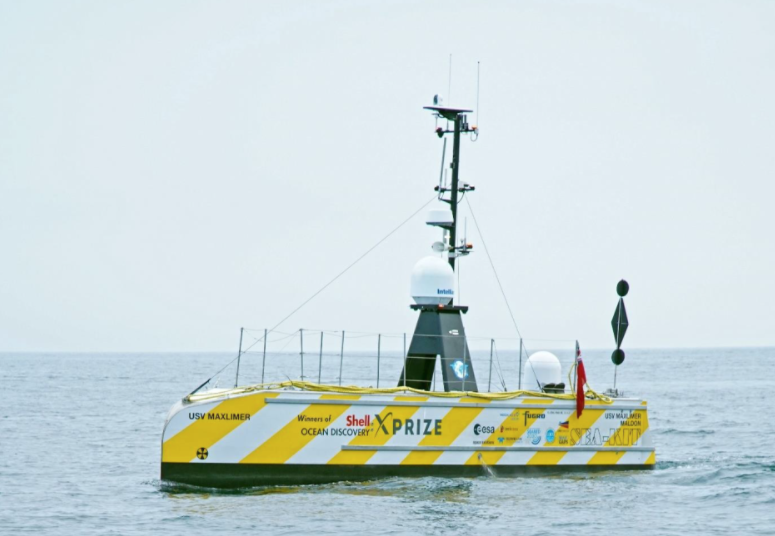Woods Hole Group Inc. recently supported SEA-KIT with ocean current forecasting services for the 22-day voyage of its uncrewed surface vessel (USV) Maxlimer in the Northeast Atlantic Ocean.
The 12m (39') Maxlimer USV safely returned to Plymouth, UK, on Aug. 14 after successfully completing remote survey operations on Europe’s Atlantic margin. The ocean current forecasts aided SEA-KIT’s pilots in their conservation of energy to ensure mission duration while surveying at speeds that provided quality bathymetric data.
Since late July, the craft has mapped over 1,000 sq. km. of ocean floor, controlled around-the-clock by SEA-KIT via satellite communications. Notably, the uncrewed vessel also returned to Plymouth with its fuel tank still around a third full. The successful completion of this project is a major achievement, clearly demonstrating the capabilities of their remotely controlled USV design in terms of over-the-horizon operation, endurance and ocean-going ability, officials said.
The UTAS (Uncrewed Trans-Atlantic Survey) project co-funded by the European Space Agency under its business application program, was originally planned to be transocean. However, due to travel restrictions and other planning complications resulting from Covid-19, this was ultimately not possible.
SEA-KIT worked collaboratively with a number of industry partners on the UTAS project. Fugro, Global Marine Group, Map the Gaps, Teledyne CARIS, Woods Hole Group and The Nippon Foundation-GEBCO Seabed 2030 project all played a part in its successful completion, contributing towards Seabed 2030’s mission to have 100% of the ocean floor mapped by that year.
“Woods Hole Group and our parent company, the CLS Group, were pleased to be able to provide operational ocean forecast support for this unique and successful test of the SEA-KIT USV capability,” Neha Groves, Metocean Forecasting Services Team Leader at Woods Hole Group said in a statement announcing the project’s success. “We have a strong interest and commitment in the ongoing development of USV technology, and its application in operational oceanography and marine environmental monitoring.”
The proven ability to conduct remote survey operations with USVs has many beneficial applications across the offshore sector. For example, critical tasks such as transocean cable route surveys (needed to meet the increase in demand for data communications) can be completed without risk to personnel and with significant savings on mobilization and operational costs when compared to executing the same task with crewed vessels.




